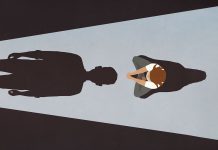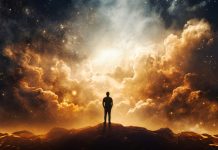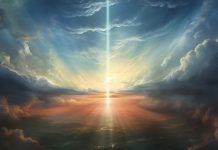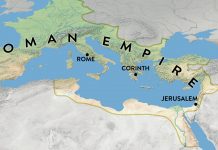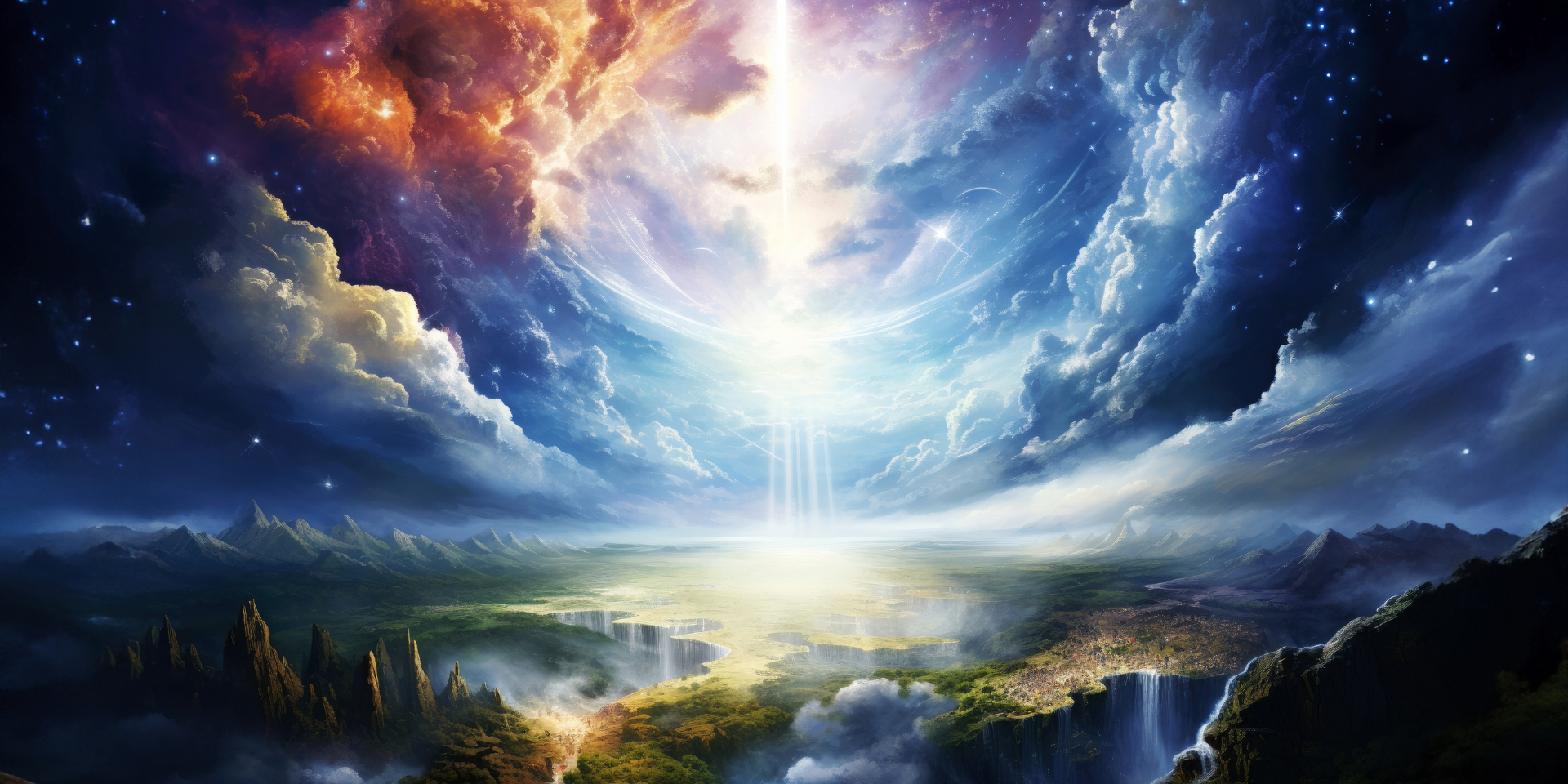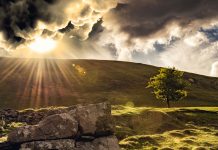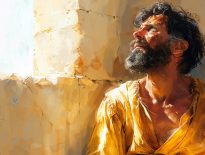It seems that one of the requirements for any sustainable worldview, philosophy or faith is that it should have some account of origins. Perhaps we could think about it simply as a necessary element of a good story. It is certainly one of the recurring tropes of superhero sequels or sci-fi epics that at some point we will come to better understand a character—whether hero or antihero—if we can learn more of where they came from and how they came to be that way.
So it is hardly surprising that the common Hebrew and Christian scriptures begin with a story of creation. A later Christian writer would summarise the story like this: “By faith we understand that the entire universe was formed at God’s command, that what we now see did not come from anything that can be seen” (Hebrews 11:2). The appeal to faith recognises that there is some mystery in the Bible’s story of origins, but it also directs those of us who come to believe in God back to that story for further insights into what God intended for that creation—how the world ought to be—and what this means for who we are and how we ought to live, even in a world that we will discover is not all that it was created to be.



Order from chaos
So, if we turn back to the first couple of pages of the Bible, we will find an expanded description of God’s originating activity of the world as we know it. It is a poetic description of how something was brought out of nothing, detailing a process by which order was brought out of disorder or chaos, and insisting repeatedly that God was the active agent: “The earth was formless and empty, and darkness covered the deep waters. And the Spirit of God was hovering over the surface of the waters” (Genesis 1:2).
As we were alerted in Hebrews 11, then we hear the voice of God. Every movement of creation begins with “Then God said . . .” and concludes with God’s declaration of the goodness of what had been made. This is described over six days until we hear a final declaration of blessings over the newly created human beings and a seventh day of rest (see Genesis 1:28; 2:3). This first part of the story culminates with God surveying all that had been made “and he saw that it was very good!” (Genesis 1:31).
A second story
The second section of this origin story (see Genesis 2) is a re-telling of the creation of human beings with greater detail, greater intimacy and further implications for their—and our—roles and relationships. There seems to be something of a hiccup for a moment when the original man (Adam) is found alone, but the ongoing process of creation is resolved by the further intervention of God, who then created “man and woman” from the single entity, together reflecting the image of God as anticipated in the first narrative: “In the image of God he created them; male and female he created them” (Genesis 1:27). Together, these first humans were assigned the role of gardeners and caretakers—“to tend and watch over” the garden that was representative of the newly created world into which humanity was intended to grow (see Genesis 2:15).

This is our picture of the world we understand—by faith—that God created and a depiction of what that world was intended to be. In contrast to primeval chaos, it was a world that was carefully and intentionally ordered. Day and night, sky and earth, sea and land, populated by sun and moon, birds and fish, plants and animals, with human beings and regular cycles of days, weeks and seasons, that would function as a whole, with each playing its part.
This relationality was the foundational structure of creation. All created life and systems of life were interdependent and indivisible. No individual life, creature or component, could flourish for long if taken away from its designed context.
This is also an important, intended and inherent insight into what it means to be human in such a creation. Human beings are designed in relationship to what is around us. We exist in contexts. Not only do we struggle for meaning, but we will struggle for existence apart from those contexts. While theologians argue about various explanations of what being created “in the image of God” might mean, the theological concept of God as trinity—three Persons in so close a relationship as to be one God—suggests human relationality might be a vital aspect of that image.
Reflecting on key elements within the Bible’s creation stories and the story of that creation going wrong (commonly known as the Fall, as narrated in Genesis 3) there are four cardinal relationships for which we are designed.[1]



God–human: In the biblical origin story, this is the first and initiating relationship that defines what it means to be human: “Then God said, ‘Let us make human beings in our image, to be like us’” (Genesis 1:26). God created this relationship by making human beings. It has been suggested that this might have been the primary reason for creating anything, so as to be in relationship with that creation and particularly with that part of the creation that was most “like us”.
We see this relationship as the first to be broken when the story went wrong in Genesis 3. Replacing the close relationship between God and these first humans, they heard God walking towards them in the garden but “they hid from the Lord God among the trees” because they were afraid (Genesis 3:8, see also verse 10).
Human–self: In Genesis 2, the man is first depicted by himself, given
autonomy and responsibility. He was at home in the garden God planted and, together with the woman at the end of that episode, they were unashamed (see Genesis 2:25). Again, this relationship was disrupted by their choice to distrust God and their first reported emotions were fear and shame, recognising they were naked (see Genesis 3:10).
Human–others: While God undoubtedly knew what He was doing, it is presented almost as an afterthought that “it is not good for the man to be alone” (Genesis 2:18). That the two resulting humans were part of each other demonstrated how essentially and closely we are and should be inter-relational. When that relationship was strained, the man and the woman immediately began blaming each other (see Genesis 3:12). However, our relationships in all the different parts of our lives continue to be key components of who we are.
Human–creation: Intriguingly, the second origin story portrays God creating all the animals and birds in relation to the man, who then exercised his caretaking role by naming each one of them (see Genesis 2:18, 19). The portrayal of creation as a garden showed the ordered relationships the human beings were to have with all creatures, plants and systems within the creation. And the disordering that came as a result of their broken relationship with God included a more difficult relationship with that wider creation, as presented in the “curses” or implications of the Fall (see Genesis 3:17–19) and their eventual banishment from the garden (see Genesis 3:23).
The biblical story explains how every community’s story began and why their stories are full of pain, injustice and struggle at the same time that they are full of joy, loving relationships and hope.
Both human origin stories presented in the Bible emphasise the intention, order and goodness of creation and the relationality of all things, but particularly of the human beings who are portrayed as having special relationships with God, each other and all of the rest of creation. We see this in the positive descriptions of creation and in the details of what was lost. Again, we discover an origin story that is helpful to understanding who we are and how our world had gone wrong, even offering insights into how we can work towards its repair: “The biblical story explains how every community’s story began and why their stories are full of pain, injustice and struggle at the same time that they are full of joy, loving relationships and hope.”[2]
This is about why the world was made, how it ought to be and how we ought to be within it. And it is the beginning of the Bible’s larger story of God’s plan of restoration and re-creation, beginning with reconciling these relationships. Like any good origin story, the seeds of the future chapters or episodes of the story were already there in the beginning.


